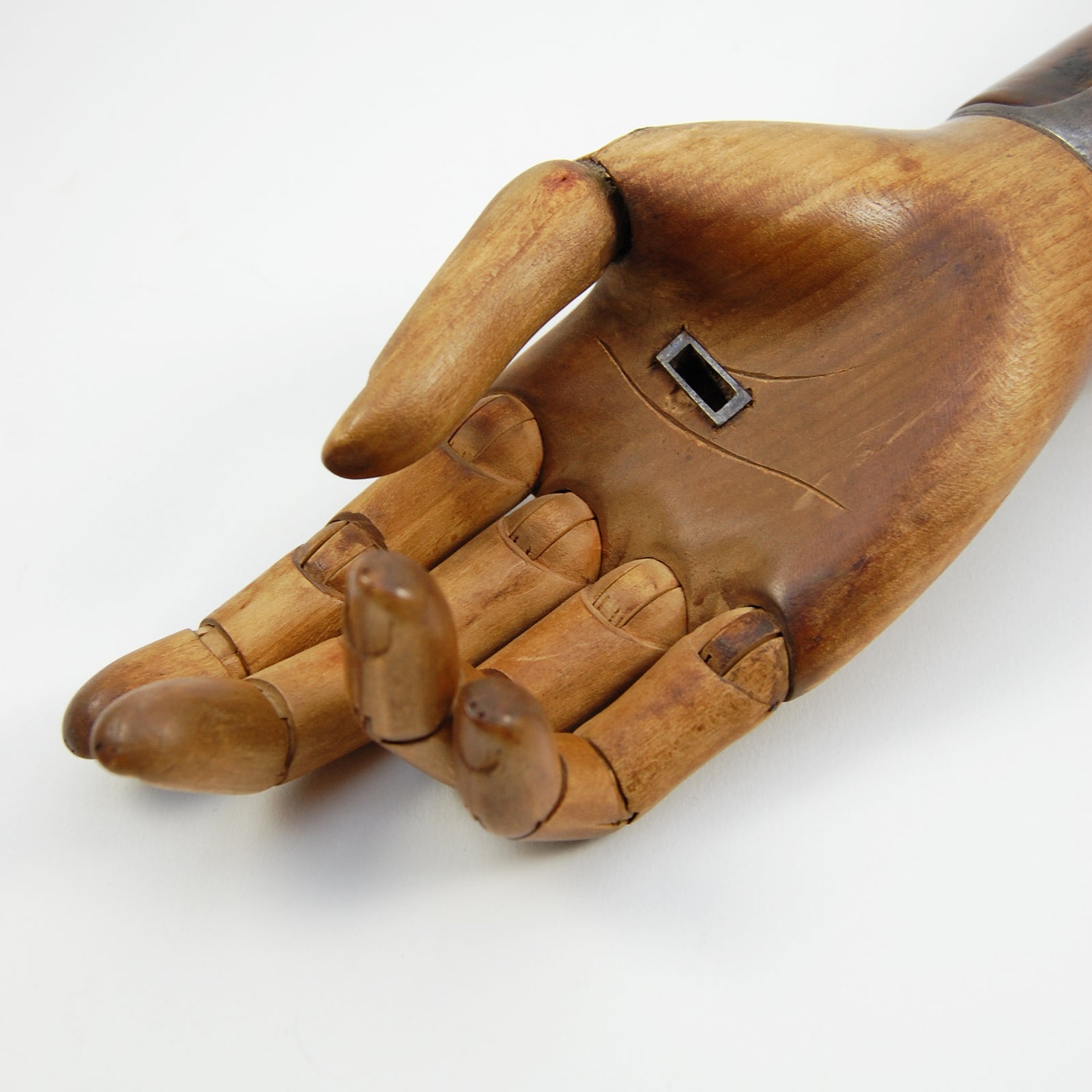A Rare Victorian Prosthetic Hand by J. Gillingham & Son

Our new email catalogue was released today, and one of the stand-out items is this rare and exquisitely articulated right hand and arm by J. Gillingham & Son, the UK’s most important prosthetics firm of the 19th and early 20th centuries and “the equivalent today of some of the most advanced companies working on prosthetics” (BBC documentary Pioneering Prosthetics in the West Country, June 15th, 2017). Other than the Chard Museum, we can locate only one Gillingham limb in an institutional collection, at the Science Museum of Victoria, Australia, and none others in auction records.

The firm's founder James Gillingham was born in Chard in 1838, the son of a boot and shoe maker. He trained with his father and, at age 21, spent some time working for one of the best bootmakers in London, where he was also exposed to sophisticated surgical appliances. Gillingham returned to Chard and took over his father’s business, The Golden Boot, occasionally producing medical braces for locals.
His career in prosthetics began in 1865 when he produced an artificial arm for a local gamekeeper who had been injured in an accident but was given up as a lost cause by London doctors. Gillingham’s great success in this case led him to found a new medical firm, J. Gillingham & Son, in 1866. The firm’s speciality was articulated limbs of great beauty and practicality, but they also made “mechanisms for dealing with curvature of the spine, paralysed limbs and fractures and dislocations as well as knee caps and artificial eyes” ("A Man Ahead of His Time" The Marshwood Vale Magazine, May 12, 2017). Close attention was paid to fitting the limb to the individual patient’s anatomy, and Gillingham developed a unique process for precisely moulding the leather portions before they were hardened.

“The firm was so successful, it was appointed principal fitter to the Admiralty and opened a branch in Plymouth. In World War One, demand for artificial limbs rose rapidly. Chard Hospital was the only Voluntary Aid Detachment institution allowed to admit and fit patients for lost limbs, which was directly attributable to the Gillinghams” ("A Man Ahead of His Time"). By 1910 Gillingham had treated more than 15,000 patients, and he kept meticulous records, including photographs of his patients before and after their prostheses were fitted (Science Museum of Victoria). He was also a philanthropist, organising the business so that the poor could pay in instalments, and developing inventions for agricultural workers that he hoped would prevent accidents and lessen the need for prosthetics. The firm operated under Gillingham’s direction until his death in 1924, when it was taken over by his son and grandson, continuing trading until the 1960s.

This hand and arm was created in autumn, 1913 for Patience Young of Littledean Farm, Bristol. Included is the original receipt ("artificial hand and arm with shoulder fittings & knife cradle: £12 12d, Dec 2, 1913") and a letter dated September 30th, 1913, addressed to her from her godmother, “My dear Patience, I shall be quite happy to pay for the hand if when you have seen about it you think it may be useful to you. Of course at first it would seem awkward to you, & it will take some time before it really helps you, but I think you would like to be able to wear it sometimes if not always, but you will better be able to judge when you have tried one. Do not have it if you feel it will be no use to you, but if you think it might be, feel sure I shall like to give it to you. Your loving Godmother, E. H. de Carteret”. Emma Henrietta de Carteret (1851-1916), of the historic manor house Hanham Court, Bristol was the wife of Pierre/Peter John de Carteret.

One of Gillingham’s specialities was providing attachments for tool use, and in this case the palm of the hand has an embedded slot for a knife, which would have been provided by the firm but is no longer present. But perhaps the most remarkable thing about Gillingham’s limbs are the articulated fingers he created using only delicately carved wood and hidden pins. Though the fingers themselves were not particularly practical, they “were of exquisite craftsmanship... and restored the sense of normality to the user, especially women, and gave back their looks as Jane French, of North Petherton, wrote in 1880: ‘I can now go to church on Sundays and hold my books without covering my arm as before’” (”A Man Ahead of His Time”). Gillingham’s attention to detail also shows in the attractive fingernails and even palm creases added to closely approximate the look of a living hand.

Given the pattern of wear on the lower side of the arm, this prothesis was clearly used, appreciated, and then carefully preserved. It is an elegant and historically significant device, technologically ahead of its time and no doubt life-changing for the woman who received it.
- For more details or to purchase this item, click here.
- You may also be interested in our other rare books and antiques connected to the history of medicine and anatomy.



